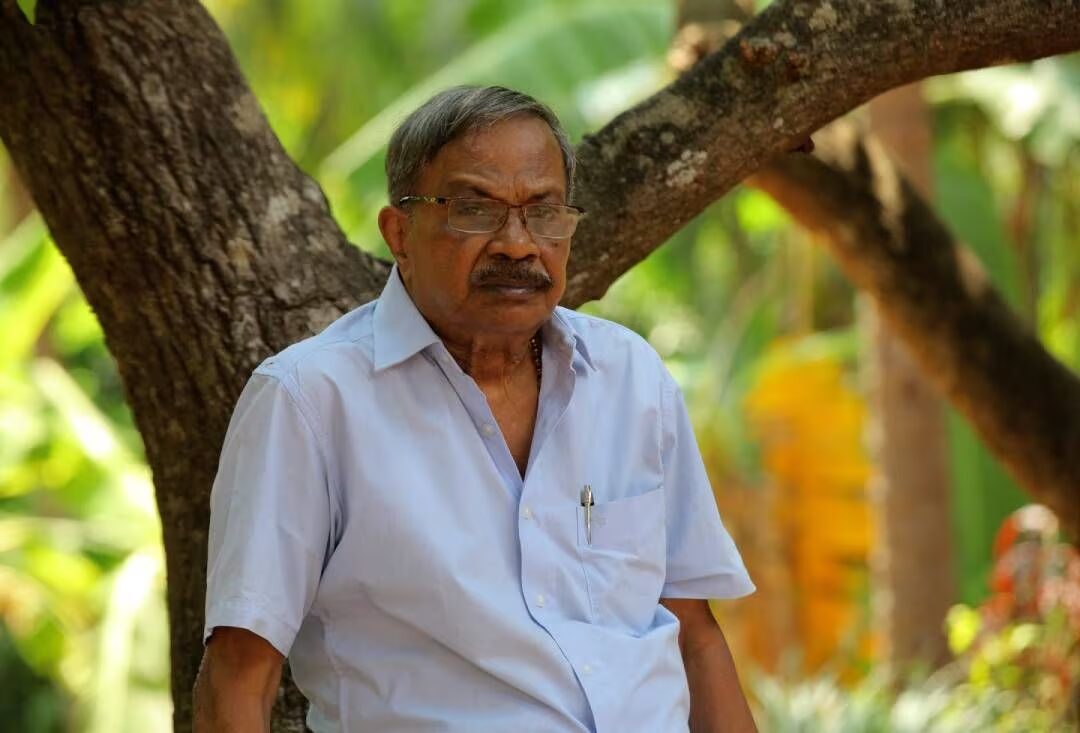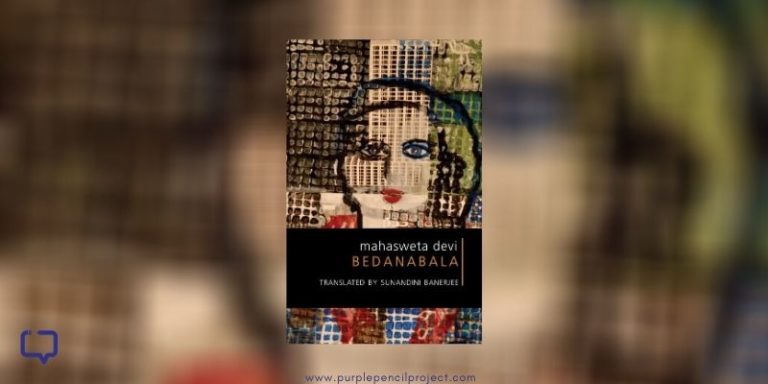Elsa Mathews reviews Bear With Me, Amma by MT Vasudevan Nair, translated from Malayalam by Gita Krishnan Kutty (published by Penguin Hamish Hamilton, 2023).
Born in 1933 in Kudallur district in Kerala, MT Vasudevan Nair experienced ‘otherness’ much early in life, a feeling which seeped into his works throughout his life. When his father returned from Ceylon (now Sri Lanka) where he had gone to work, he returned with a little girl, more or less of MT’s age. While his father tried to convince the family that the girl was a friend’s daughter whose parents had died in the conflict, her inadvertently calling the man ‘Daddy’ revealed her paternity.
It was a realisation that tore the family apart. Even though the young Ceylonese girl was the sister he always longed for, she barely communicated beyond a few words in Sinhala and left with her father a few days later. Left wondering about this half-sister of foreign origin, he learned several years later through some other common acquaintances that she had got married, which compelled him to write In Your Memory (Ninte Ormmaku).
MT Vasudevan Nair’s Literary Achievements and Themes
MT Vasudevan Nair, known simply as MT by friends and fans alike, has won several prestigious awards, including the Central Sahitya Akademi award thrice in 1971, 1982, and 1986, Jnanpith Award 1995, Padma Bhushan, 2005 and Kerala Jyothi Award, 2023, has written characters that portray a sense of belonging and un-belonging.
For example, his 1958 story Nalukettu (House with Four Pillars) narrates the story of a young boy, Appuni, who grows up alienated from the prestige and power of the matrilineal household as his mother had to leave it. Known to be a classic in Malayalam literature, it was noted for its depiction of the disintegration of the matrilineal society.
Asuravithu (The Demon Seed), which followed in 1972, dealt with a similar theme: the individual’s search for the self amid the breakdown of existing socio-cultural and economic structures. Raandamoohzham (The Second Turn), 1984, depicts the Mahabharata through the eyes of Bhima. Instead of placing the characters in their usual mythological set-ups, he essays them as mere mortals and portrays the second-hand treatment meted out to Bhima throughout his life.
Influence of Rural Life and Family
The stories that his mother narrated as she went about dealing with the daily household were all absorbed by this little boy, who later used them to write exemplary short stories. This explains the title of his memoir, Bear with Me, Amma.
Life in rural Kerala, full of uncertainties, myths, discriminations, exploitation, ritual, mundanity and contradictions further enriched his stories. In the preface itself, we are introduced to Velayudhettan, a man who was thought to be insane and who was kept in chains. He broke open his chains, walked to the portico of the Vasudevan house, and smiled at his mother, who gave him some rice to eat. This incident is the inspiration behind his short story collection Irrutinte Athmavu (Soul of Darkness, 1957).

While Amma dominates throughout the book, trying to keep together the household, which is slowly getting overshadowed by greedy uncles and spinster aunts, grandmothers, along with traditional physicians, teachers, priests, and locals, come over to fulfil certain responsibilities or rituals, create an atmosphere of constant activity, giving the reader a sense of being immersed into an ever-dissolving matrilineal Neverland.
The story of Padmanabhettan, a distant relative who eased the process of death for the people in the community, is one such example.
Though perpetually drunk and intoxicated, he would at once take on the responsibility for whatever had to be done. He would go down to the river, have a bath, drape the dhoti, and he had tucked into the rafters of one of the huts on the riverside and around his waist, smear Vibhuti on his forehead, arrive at the appointed place and take charge of everything. If it was a house waiting for death to happen, he would spend days there. The people of the house would have to persuade him to eat. Once the impending event or the cremation was over, he would leave.
– MT Vasudevan Nair
According to MT, Padmanabhettan could “calculate the time of death well ahead according to the stars and segments of the lunar months and tell the relatives discreetly when they could expect the event to happen.”
It is Padmanabhettan’s character which later inspired his story Swargam Thurakunna Samayam (When The Doors of Heaven Open, 1983). The bevy of women who came to help in the household inspired such poignant portrayals of women like in Kutiyyedathi (1971), Manju (Mist), the story of a schoolteacher in a hill station who waits for her true love and more recently, his screenplay Neelathamara (The Blue Lotus), the story of a maid who falls in love with her employer’s son.
Insights into Writing
MT Vasudevan, who has written two books on the craft of writing, Kaathikante Pannipura and Kaathikante Kala, shares some leads for aspiring writers.
A writer can narrate events exactly as they happened, situating himself in the world in which they took place. This is the simplest technique in story writing. Using a third-person narration is convenient to explain things when needed or to lower or heighten the speed of events. But this technique would not suit my story. What was important was not the events themselves but the mental conflicts of the people who were involved in them.
– MT Vasudevan Nair
Unlike several of his contemporaries, MT’s brilliance shone forth in the world of cinema, too. He reframed storytelling on screen with award-winning films like Oru Vadakan Veerakatha (1989), Kadavu (1992), Sadayam (1992), and Parinayam (1994). While MT Vasudevan Nair’s Bear with Me, Amma tracks his evolution as a writer, it does not highlight his foray into films, a phase that begs for another memoir.
Conclusion
Much like his usual style, the book is a simply worded delight which brings alive the lives, struggles and dilemmas of the people who lived around him. Gita Krishnankutty’s translation is lucid, keeping the simplicity of the text intact and maintaining the rustic feel of the original text. A glossary of terms at the beginning of the book allows the non-Malayali reader to understand the intricacies of the social life in 1940-1950s Kerala.





















